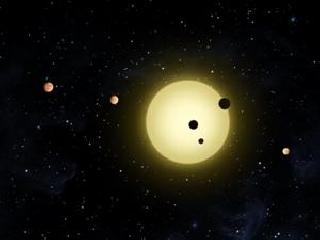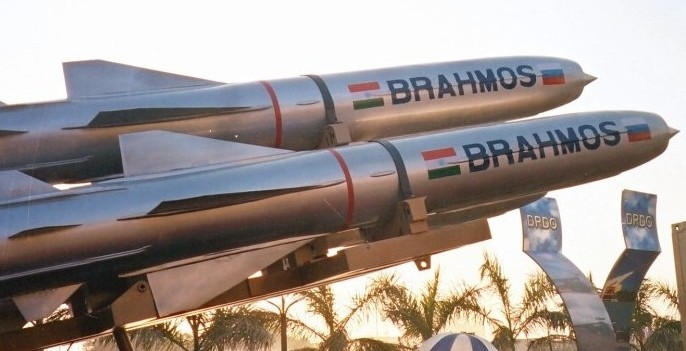
An artist's conception of a simultaneous transit of three planets observed by NASA's Kepler spacecraft on Aug. 26, 2010. A NASA photo
WASHINGTON (PTI): Astronomers have discovered what they say is an amazing planetary system in which six planets are orbiting around a Sun-like star some 2,000 light-years away.
The University of California researchers, who used NASA's Kepler mission to spot the planet system, said five of the six planets are in tightly packed orbits and range in size from 2.3 to 13.5 times the mass of Earth.
They orbit the star, named Kepler-11, in less than 50 days within a region that would fit inside the orbit of Mercury in our Solar System.
With an orbital period of 118 days and an undetermined mass, the sixth planet is larger and farther out, the team reported in the journal Nature.
"Not only is this an amazing planetary system, it also validates a powerful new method to measure the masses of planets," said Daniel Fabrycky, a Hubble postdoctoral fellow who led the orbital dynamics analysis.
"Of the six planets, the most massive are potentially like Neptune and Uranus, but the three lowest mass planets are unlike anything we have in our solar system," said Jonathan Fortney, who led the work on understanding the structure and composition of the planets.
The Kepler space telescope detects planets that "transit" or pass in front of their host star, causing periodic dips in the brightness of the star as measured by the telescope's sensitive photometer.
The amount of the brightness reduction tells scientists how big the planet is in terms of its radius, while the time between transits tells them its orbital period.
To determine the planets' masses, Fabrycky analysed slight variations in the orbital periods caused by gravitational interactions among the planets.
"The timing of the transits is not perfectly periodic, and that is the signature of the planets gravitationally interacting," he said.
"By developing a model of the orbital dynamics, we worked out the masses of the planets and verified that the system can be stable on long time scales of millions of years."
Previously, detections of transiting planets have been followed up with observations from powerful ground-based telescopes to confirm the planet and determine its mass using Doppler spectroscopy – a method that involves the observation of Doppler shifts in the spectrum of the star around which the planet orbits.
More than 100 transiting planets have been observed by Kepler and other telescopes, but the vast majority of them are Jupiter-like gas giants and almost all of them are in single-planet systems.
The Kepler-11 system is remarkable in terms of the number of planets, their small sizes and their closely packed orbits.
Before this, astronomers had determined both size and mass for only three exoplanets smaller than Neptune.
 Previous Article
Previous Article Next Article
Next Article














The Indian Air Force, in its flight trials evaluation report submitted before the Defence Ministry l..
view articleAn insight into the Medium Multi-Role Combat Aircraft competition...
view articleSky enthusiasts can now spot the International Space Station (ISS) commanded by Indian-American astr..
view article